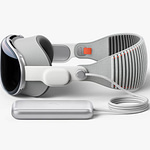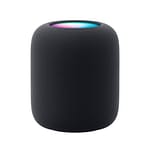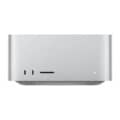- All Apple Devices
- Apple HomePod
- Apple HomePod (1st generation)
Apple HomePod (1st generation)
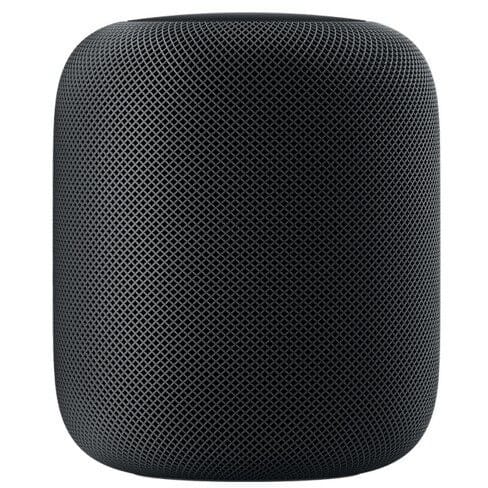
Apple HomePod (1st generation)
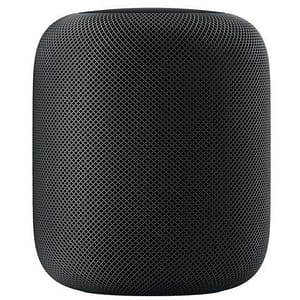
The Apple HomePod (1st generation) is a high-quality smart speaker that combines advanced technology and sleek design to offer an exceptional audio experience. Released in February 2018, it quickly became a popular choice for music lovers who value sound quality above all else.
Product Brand: Apple
9
Pros
- Stylish, modern design
- Solid build quality
- Excellent audio quality with deep bass and clear treble
- Great for music enthusiasts and audiophiles
- Integrates seamlessly with Apple devices and ecosystem
- Offers features like voice commands and smart home control
Cons
- Expensive compared to other smart speakers with similar sound quality
- Limited support for non-Apple music services
- Limited compatibility with non-Apple devices and services
- Some users may find the voice recognition and commands to be less accurate than other smart speakers
Apple HomePod (1st generation) Overview
The Apple HomePod (1st generation) is a high-quality smart speaker that combines advanced technology and sleek design to offer an exceptional audio experience. Released in February 2018, it quickly became a popular choice for music lovers who value sound quality above all else.
This speaker comes in a compact design that is elegant and modern. The exterior is covered in a seamless mesh fabric that gives it a stylish look and feels great to the touch. The top of the HomePod features a touch-sensitive control panel that allows you to play, pause, and adjust the volume of your music with a simple tap.
The HomePod uses advanced technology to deliver rich, clear sound that fills the room. It features a high-excursion woofer and an array of seven beamforming tweeters that work together to produce detailed and immersive sound. With its built-in Apple Music support, you can easily stream millions of songs and playlists using voice commands. You can also control the HomePod using Siri, Apple’s virtual assistant, to play music, set timers, and control smart home devices.
One of the standout features of the HomePod is its ability to adapt to the acoustics of the room. Its automatic room-sensing technology measures the acoustics of the surrounding environment and adjusts the sound output accordingly. This ensures that you get the best possible sound quality regardless of where you place the HomePod in your home.
However, the HomePod does have some limitations. It is only compatible with Apple devices and does not support Bluetooth pairing, meaning you cannot connect non-Apple devices directly to the speaker. The HomePod also lacks some of the features that are available on other smart speakers, such as multi-room audio and voice recognition for different users.
The power source for the Apple HomePod (1st generation) is a built-in power supply that requires an electrical outlet. It comes with a detachable power cable that you can plug into the back of the device, and then connect the other end to a power outlet. The cable is about 2 meters (6.5 feet) long, giving you flexibility in where you can place the HomePod. It does not have a battery, so it needs to be connected to a power source at all times in order to function.
The Apple HomePod (1st generation) is an excellent choice for anyone who is looking for a high-quality smart speaker that delivers exceptional audio quality. At launch, the HomePod was priced at $349.
Full Technical Specifications
Apple HomePod Specifications
| Device Type | Smart Speaker |
| Released | 09 February, 2018 |
| Dimensions |
6.8 inches high (172 mm) 5.6 inches wide (142 mm) |
| Weight |
5.5 pounds (2.5 kg) |
| Colors |
Space Gray White |
| Audio Sources |
Apple Music iTunes music purchases iCloud Music Library with an Apple Music or iTunes Match subscription Third-party music services Apple Music Radio or episodes on demand Radio stations from TuneIn, iHeartRadio, and Radio.com Apple Podcasts News briefings AirPlay other content to HomePod from iPhone, iPad, iPod touch, Apple TV, or Mac |
| Audio Technology |
High-excursion woofer with custom amplifier Array of seven horn-loaded tweeters, each with its own custom amplifier Six-microphone array for far-field Siri Internal low-frequency calibration microphone for automatic bass correction Direct and ambient audio beamforming Computational audio for real-time tuning Multiroom audio with AirPlay 2 Stereo pair capable |
| RAM | 1GB |
| Storage Capacity | 16GB |
| Touch Controls |
Tap or hold + or – for volume up/down Touch and hold for Siri Tap to play/pause music or Siri Double-tap to skip Triple-tap to skip back |
| Wireless Features |
802.11ac Wi-Fi with MIMO Direct guest access Bluetooth 5.0 |
| In the Box | HomePod, and Documentation |
| Power | Built-in power supply, power cable not officially user-detachable |
| Processor Details | Apple A8 |
| Operating System OS => Every computer system run on a base software called Operating System (OS). Operating System controls all basic operations of the computer (such as smartphone, PDAs, tablet computers and other handheld devices). The Operating System allows the user to install and run third party applications (apps), apps are used to add new functionality to the device. | audioOS 16.3.2 |
Disclaimer Note
We can not guarantee that the information on this page is 101% correct.

